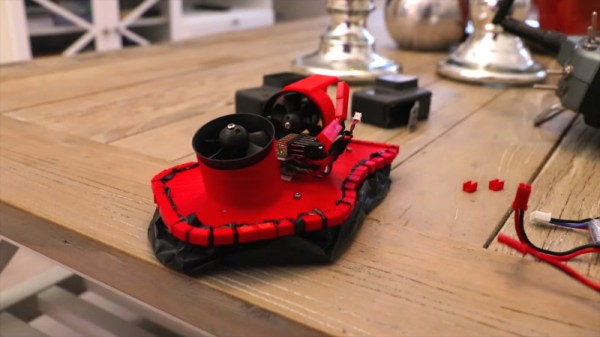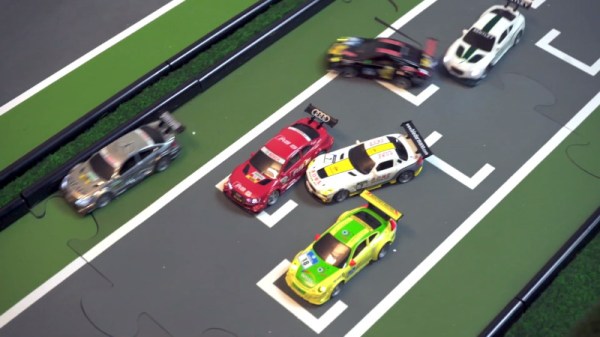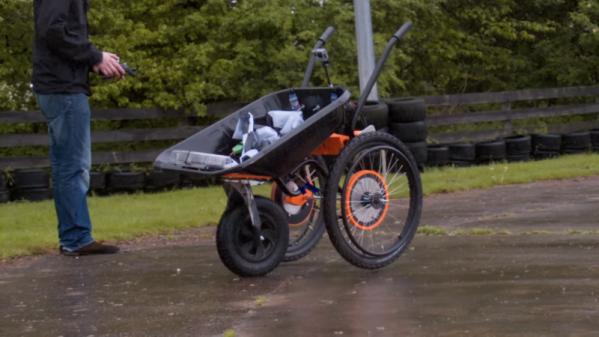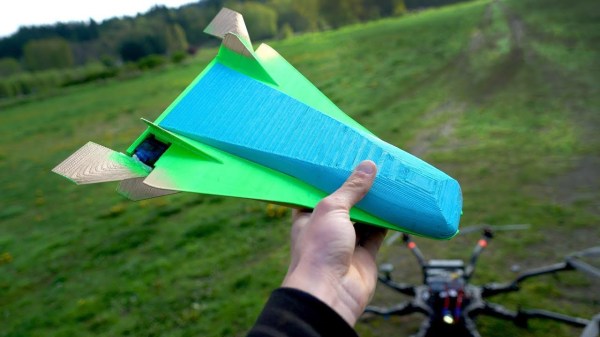For many people the gateway drug to aviation is radio-controlled aircraft, and in [Andre Bandarra]’s case this led to paragliding. Now he has combined the two, turning his full size paragliding wing into an RC aircraft. (Video, embedded below.)
The primary controls of a paraglider are very simple, consisting of two brake lines that connect to the trailing edge of the wing. When a line is pulled, it increased drag on that side of the wing, causing it to turn. [Andre] connected the brake lines to two 3D-printed spools, which are each powered by a large RC servo that he modified for continuous rotation. These are mounted on a slim wooden frame that also holds the battery, RC receiver, an old electronic speed control to step down the battery power, and attachment straps for the wing. Without enough mass, the wing would just get blown around by the lightest of breezes, so [Andre] hooked a cloth bag filled with sand to the frame to act as a counter weight.
On the first test flight the wind was too strong and the sandbag too light, making it impossible to control. The hardest part of the flight is the launch, which requires the help of someone who knows how to fly a paraglider. The second test day had much better success. With only a slight breeze and a heavier sandbag, the contraption flew beautifully, floating slowly across the beach. He admits that there are a number of improvements he can make, but as a proof of concept using parts he had lying around, it was a roaring success.
For paragliding from flat ground, you can always strap a motor to your back, like the open source OpenPPG electric paramotor. For more crazy RC flying contraptions, also keep an eye on guys at [Flite Test].
Continue reading “Floating On The Breeze With A Full Size RC Paraglider”


















